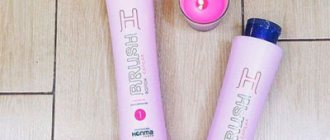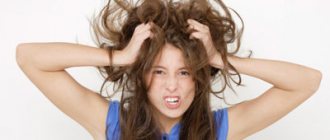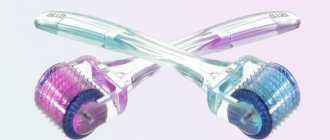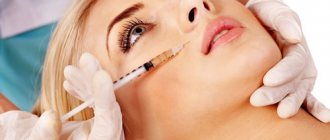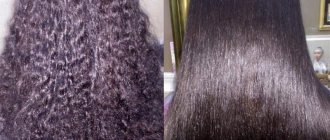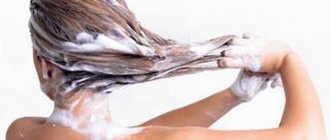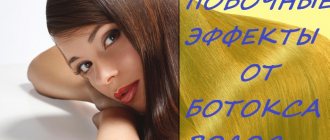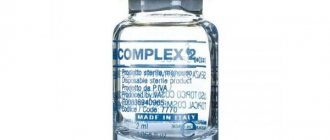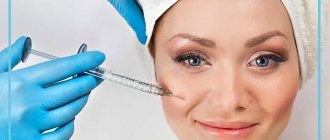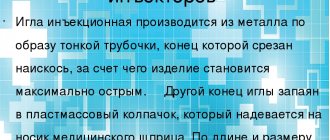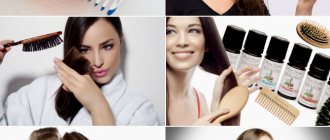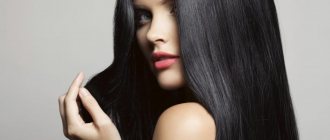Hair Botox is a unique anti-aging procedure used in modern cosmetology to improve the appearance of hair after painful or age-related baldness, as well as to eliminate natural changes in hair structure with age.
Every year the procedure is gaining more and more popularity, it is ordered more and more often in salons, successfully improving damaged or naturally unhealthy hair. But hair care after Botox is a separate issue for attention, since after the procedure it requires special treatment.
Condition of curls after Botox and care for them
After the procedure, the hair looks almost perfect - smooth and silky, completely healthy in appearance. The strands fit better into your hair, gain a healthy weight and don’t bristle in all directions—it becomes much easier to style them. Unfortunately, this effect is short-lived - it will last 2-3 weeks, after which the procedure must be repeated.
All standard procedures - combing, washing, styling - will take place as usual . You will not harm your hair after Botox with these usual preparations. Botox does not have any effect on the frequency of washing, except that you should not wash your hair on the first day after the procedure , since there is a risk of washing off the incompletely absorbed composition.
Devices for drying and straightening your hair will not cause harm - continue to use your hair dryer and curling iron as you please. Curling hair after Botox may not be as effective as before. This is due to a change in the composition of the hair for the better, filling it with useful substances.
Helpful care tips
To enhance the effectiveness of botulinum toxin, especially when introducing the drug into the scalp, hairdressers advise taking an additional vitamin complex. This will be useful not only for hair after exposure, but also for the body’s immunity as a whole.
In the first week after Botox has been applied to your hair, it is not necessary to additionally moisturize it with masks and balms.
Do not expose your curls to sunlight, high or low temperatures . To do this, wear a hat in summer and winter, cover your head in rainy weather and fog.
Botox is a proven method of professional hair care and improvement. The high cost of the procedure is completely justified. Sulfate-free shampoos and proper care can preserve the splendor and luxury of curls for up to 5 months.
Proven products for performing Botox for hair:
- Cadiveu;
- Honma Tokyo;
- BOTOHAIR INOAR;
- L'Oreal Fiberceutic;
- Perola;
- Fix Nanokeratin;
- Agi Max Botox Capilar Radiance Plus.
How does Botox work on hair?
A special medicinal composition is applied to the hair for a refreshing, rejuvenating and normalizing effect. Most often, Botox is applied not for cosmetic purposes, but for medicinal purposes.
A full course of such hair treatment consists of 5-6 procedures , after which the effect will linger for a long time (subject to proper care) and will delight you for several more months.
It is recommended to repeat the course of treatment approximately every six months if you have chronic hair problems. Without skipping procedures, you will receive:
- healthy-looking young hair;
- prevention of dermatological problems of the scalp;
- normal growth;
- healthy shine;
- smoothness and manageability of hair, easier styling.
The effect of Botox for hair at any age will be extremely positive and favorable; negative side effects are possible only in the case of allergies and existing serious dermatological problems.
Who is it suitable for?
Indications for the procedure are: dry hair, brittleness and lack of shine. The drug is optimally suited for owners of fine, porous hair with split ends.
. It evens out the hair structure, smoothing out the “scales”. Botox is indispensable for those who often dye or lighten their hair.
Using the drug will allow you to get a blonde color without unpleasant yellowness. In addition, Botox is often recommended for slow growth and loss, since all formulations contain a large amount of nutrients, trace elements and vitamins.
The procedure is absolutely safe, but has some contraindications. If you are prone to allergies, it is recommended to conduct a preliminary test of the drug on the elbow. Abrasions, open wounds or irritation on the scalp also serve as an obstacle to manipulation.
It is strictly forbidden to carry out the procedure in the presence of neoplasms. During pregnancy and lactation, hair Botox should be used with extreme caution. You should not use the products too often. In the first trimester, it is better to abandon any chemical drugs in favor of natural remedies.
Hair care in the first three days
Botox has a chemical effect on the hair, so it is impossible not to notice such changes in real time. The first three days the hair will harden after the procedure and will take shape after the initial softening.
Of course, you cannot wash them during this, since the main part of the composition will not have time to be absorbed into the roots and “bodies” of the hair, improving them. By rushing, you can ruin the full result you are expecting.
This does not mean that you need to worry about your hair for the first day and do nothing with it.
Do your styling, comb your hair after sleep without fear, but under no circumstances sign up for other cosmetic procedures, much less coloring (more on that later). !Important Interaction with other types of procedures can destroy the effect of Botox, and in the worst cases, cause a real disaster on the head.
What is the difference from keratin straightening
Botox is primarily hair restoration; the visible effect lasts from 1 to 3 months. Botox does not straighten hair, but only makes it healthier, making it less fluffy and porous. It also neutralizes yellowness, which is important for blondes.
Keratin - the main function is hair straightening, visible effect up to 5 months. Keratin straightening cannot be done by pregnant or breastfeeding women. Due to smoothing, hair volume is significantly reduced. The keratin composition does not contain as many useful components as Botox, since it has a different function.
Comparing Botox and keratin:
But the two procedures also have something in common:
- they are suitable for any hair type, - you need to use a special shampoo and mask, - your hair becomes smooth and shiny.
What should you not do after the procedure?
Despite the minimum restrictions, there is still a danger of spoiling newly renewed hair. For the most part, the negative effect occurs due to the incompatibility of chemical components that are key in different procedures. Due to unexpected contact of inappropriate means, rejection begins.
Is it possible to dye your hair after Botox?
The main danger is coloring, especially with bleaching of the strands. The chemicals used to color and lighten hair are very aggressive. If you use them incorrectly, there is a chance to “burn” even completely healthy hair into a washcloth of an indeterminate color.
The effect on hair after Botox can be varied, but always negative. For example, you will most likely get a completely different shade than you expected. Hair may be colored unevenly but remain the same at the roots. There may be scalp irritation or increased dandruff formation if you have oily skin.
Of course, the dye or bleach will completely destroy the remaining nutritional composition on the hair, so the effect will not be fully achieved. The hair will not have time to be nourished and will bristle and take on its previous unhealthy appearance.
Hair tinting after Botox
Tinting is a lightweight coloring option. A light, unstable dye is applied to the hair, which does not penetrate deep into the hair and does not eat into the root bulb. The effect of tinting is relatively short-lived, but it is impossible to ruin your hair with such a procedure.
Tinting after Botox is not recommended if you have weak or painful hair and scalp problems. Normally, toning will not harm, but refrain from the procedure in the first three days after the procedure, since at first any effect on top of Botox is harmful.
Baths and saunas
In the first days, it is extremely undesirable to subject your hair to heat and steam treatment . Steam is harmful to the structure of the hair, which after the procedure is sensitive and susceptible to any negative influence. By going to the bathhouse or sauna, you can destroy the result at the root and get bristling and unruly hair without a hint of smoothness and a healthy appearance.
Sea water
In the first three days, protect weak hair from exposure to sea water. Sea salt will react with the product that is not completely absorbed and will not allow it to take effect completely.
Reviews about the procedure
In our group, readers shared their experience of the procedure by writing the following reviews:
I am delighted with Botox! If you really had Botox (you can mix anything) as well as with keratin. A master with a capital M does it for me. He opens everything in front of me and fixes it in front of me. My hair is dyed, thin, and didn’t grow well. After Botox, they shine, began to grow, thickened. Super thing. Botox is recommended to be done twice a month. Since the effect is cumulative. You won’t notice anything from once. Natalya Nikolaevna
I did. I don’t have much hair, it’s light and a little curly, and I constantly do highlights. I wanted to kind of heal it, so I did it. My hair, of course, became smooth, but the volume disappeared completely. If before I could give myself volume with the help of styling products and it seemed that my hair on my head was normal, then after Botox my hair looked noticeably thinner and straight, the curl did not hold. Since I wash my hair every morning, this effect lasted me about a month. Irina Shalyapina
I liked it, before the procedure my hair was terrible.. I want to do more, but the price tag? Svetlana Kanchinova
I did. I wanted to restore my hair after a boost up! I didn’t notice any particular effect, at first the hair was a little denser, but then everything became as it was Paiza Asadulaeva
I did Botox recently, I really liked the effect, my hair became dense and soft, but the effect lasted for 1 month (( Although it seems to me that even now, 3 months have passed, the flock’s hair looks noticeably better. Kira Andreeva
How to dry your hair after Botox
As mentioned above, you can use a hair dryer - it will not damage the hair structure and will not interrupt the chemical process of strengthening and rejuvenation, which continues for some time after the procedure (2-3 days), but it will be much better if you dry it properly before the main drying .
You should start with the ends - blot them, remove excess moisture. Then, with the same careful blotting movements, move higher, to the roots. Try not to confuse them too much. Once there is no dripping water, you can safely use a hair dryer.
If you don’t want to use any devices or are not used to drying your hair with a hairdryer, do as before, without changes. Straighten the strands a little to prevent them from becoming tangled and wait until completely dry.
The best sulfate-free shampoos
Professional products for post-procedure care: TOP-5
COCOCHOCO Intensive Shampoo Hair Repair Treatment
A gentle, sulfate-free moisturizing shampoo for dry, damaged hair. Ideal for use after keratin straightening. Suitable for colored hair. Smoothes, reduces frizz, detangles, makes combing easier. From 700 rub. for 250 ml.
Kerasist Grape
Post-procedure care shampoo with high keratin content. Prolongs the effect of the procedure. Hair becomes softer and silkier. From 500 rub.
Estel Otium Aqua Mild
A moisturizing complex with betaine and amino acids improves the condition of dry, damaged hair, helps retain moisture inside the hair without weighing it down. Makes hair silky, healthy, soft and shiny. Has an antistatic effect. From 500 rub.
FELPS XMIX Bamboo Shampoo
Brazilian post-treatment composition with bamboo extract. From 1300 rub.
SALERM “Keratin Care”
Special shampoo for preparing hair for the straightening procedure, for home care, to maintain the effect after keratin straightening. Supports the protective lipid barrier. 1110 rub.
Soft natural shampoos: list of the best
There are no good or bad shampoos, there are ones that suit you or those that don’t.
Pay attention to how the scalp reacts - whether there is a feeling of dryness, tightness, whether the roots are washed well. After shampoo without silicones, hair can get tangled, frizzy, and be hard to the touch, so be sure to use a balm or conditioner every time, and make a mask once a week
GREENPHARMA Volume
Mild shampoo for damaged, dry, brittle hair. Yarrow and cinquefoil extracts, containing a large amount of tannoids, provide elasticity to curls. Foams well, adds volume, does not dry out the length. From 300 rub.
BIOLAGE RAW Nourish
Nourishing shampoo with quinoa and honey, cares for dry, dull hair, making it soft. 71% natural ingredients, without silicones, parabens, synthetic dyes.
MULSAN All type Shampoo
Natural shampoo for all hair types with chamomile and wheat germ extract. 399 rub.
KORA Neutral for sensitive scalp
Natural plant base (gorichon, buddleia davida, wormwood), without silicones, dyes. Helps relieve itching and irritation. Does not foam well, be sure to use a balm. From 400 rub.
Yves Rocher Low ShamPoo Soft Hair Wash Cream
Herbal care for normal hair. Its advantage: creamy texture, lack of sulfates for the most gentle hair washing. It can be used every day or alternated with regular shampoo if you need an ultra-gentle shampoo. 450 rub.
Adherents of everything natural can try making homemade shampoo themselves - it will definitely not contain sulfates, parabens and silicones.
TOP 5 sulfate-free shampoos for oily hair
Products that contain milder surfactants, but still clean oily skin quite well:
GreenPharma Cedrate
Sebum-regulating, with citron essential oil. Inexpensive sulfate-free shampoo for oily hair, perfectly cleanses.
It has a soft detergent base of plant origin. Active plant components, geranium and citron essential oil, have astringent properties, normalize the activity of the sebaceous glands, and reduce the production of sebum. Cost from 300 rub. for 500 ml.
DSD Medline Organic 001 Luminox Shine Shampoo
Natural shampoo without parabens and sulfates, contains extracts of Serenoa palm, nettle, edelweiss, improves the condition of the scalp. About 1300 rub. for 200 ml.
CocoChoco Boost-up
Thickens thin hair, gives lasting volume at the roots, which means it stays fresh longer. Contains proteins, alginate, panthenol, keratin, hyaluronic acid, plant extracts. From 900 rub. for 250 ml.
GKhair Balancing Shampoo
A professional product from a keratin manufacturer that prolongs the effect of keratin straightening. Gently eliminates excess fat secretions. Actively restores the cuticle from the inside, while maintaining the natural pH level. From 1200 rub. for 300 ml.
Vichy Dercos Dermo-Soothing Sulfate Free Shampoo
Soothing care shampoo without sulfates, parabens, silicones for oily and normal hair. Soothes the scalp, strengthens resistance to aggressive factors. Hypoallergenic. Suitable for colored hair. From 600 rub. for 200 ml.
To keep your roots clean and voluminous longer: TOP best shampoos for oily scalp >>>
How to care for oily hair and get rid of oiliness at the roots >>>
Is it possible to curl your hair after Botox?
There will be no bad consequences after curling your hair after Botox with curlers or an automatic device . Both physical impact and high-temperature curling will in no way affect the integrity and healthy appearance of your hair.
Since the hair after the procedure will become heavier and shiny from natural substances, it may become more difficult to curl it. Curling with the help of devices may not change in any way, but curling by hand or with different types of curlers will become more complicated. Heavier hair will hold less curl and this style will straighten out faster.
What harmful substances may be contained in shampoos?
- Lauryl and laureth sulfates are the basis of shampoos and very rough surfactants. They are responsible for intense foaming during washing and for cleansing the skin and hair; they are included in almost all shampoos.
They are designated on the labels as follows:
| Title in English language | Symbol | Title in Russian language |
| Sodium Lauryl Sulfate | SLS | Sodium lauryl sulfate |
| Sodium Laureth Sulfate | SLES | Sodium laureth sulfate |
| Ammonium Lauryl Sulfate | A.L.S. | Ammonium lauryl sulfate |
| Ammonium Laureth Sulfate | ALES | Ammonium laureth sulfate |
According to the Journal of the American College of Toxicology (1983, Vol. 2, No. 7): Researchers have noted that the longer these ingredients are in contact with the skin, the greater the likelihood of skin irritation and an allergic reaction. Lauryl and laureth sulfates cause changes in the “epidermis”, clog pores, settle on the surface of hair follicles and damage them, and can cause eye irritation, hair loss, and lead to dandruff.
Other researchers have concluded that these components remove not only impurities, but also beneficial natural components from the skin, thereby disrupting its protective function. Under the influence of laureth sulfates, the skin ages faster (Int J Toxicol. 2010 Jul;29, doi: 10.1177/1091581810373151).
Although scientists have not yet proven that these substances can have a carcinogenic (from the English word cancer) or toxic effect, there is still such a danger. It is believed that in concentrations of 1-5% they are harmless. In shampoos, sodium laureth sulfate is present in a concentration of 10–17% (as a rule, they are listed in second place after water, which means that their concentration is maximum).
At the same time, there are softer surfactants, they are added in small concentrations, they are less harmful, but their cost is quite high compared to lauryl and laureth sulfates. On the packaging they may be designated as follows:
- Sodium cocoyl isethinate (the mildest surfactant)
- Disodium Cocoamphodiacetate (mild emulsifier)
- Sodium coco-sulfate
- Cocamidopropyl Betaine (betaine)
- Decyl polyglucose (polyglycoside)
- Сocamidopropyl sulfobetaine (sulfobetaine)
- Sodium sulfosuccinate (sulfosuccinate)
- Magnesium lauryl sulfate
- Glythereth Cocoate
- Parabens are also dangerous components in shampoos. We have already written about their harm.
- Mineral oils are products of petroleum refining. It is believed that they can only be dangerous if taken orally. However, WHO classifies mineral oils as Group 1 carcinogens. That is, they are potentially dangerous substances that can lead to the occurrence of malignant tumors. And only highly refined oils are not considered dangerous. Mass-market shampoos contain unrefined, dangerous mineral oils.
- Formaldehyde is a cosmetic preservative. It is toxic and has a negative effect on the reproductive organs, respiratory organs and central nervous system. Due to the ban on the use of formaldehyde in cosmetics, manufacturers began to label it as Quaternium-15 (releases free gaseous formaldehyde), Dowicil 75 Dowicil 100, Dowicil 200 - all of them cause contact dermatitis in humans.
- Phthalates - used in the production of consumer products such as perfumes, cosmetics and shampoos, medical devices, soft toys.
A study published in the journal Pediatrics provides compelling evidence that phthalates in children's cosmetics affect the reproductive function of boys. The effect of phthalates on children is especially dangerous. Infants are exposed to phthalates in shampoos, lotions, and powders. Phthalates can cause asthma, infertility, and decreased testosterone levels in boys. Due to health concerns associated with exposure to phthalates, some have been banned in the European Union and the United States. - “PEG” (Polyethylene glycol), polyethylene glycol (ethylene glycol) – stabilizer, thickener, defoamer. Due to its ability to influence processes in the body, this substance can cause serious metabolic disorders. It has been proven that female animals consuming PEG gave birth to babies with genetic changes. (Anderson et al., 1985).
How to properly remove Botox from hair?
Botox is absorbed into the roots and bodies of the hair so that the effect is long-lasting and the product is not washed out after each wash. If for some reason you need to completely remove the product from your hair (you need to dye your hair or the procedure itself was unsuccessful), you won’t be able to do this with a regular rinse - you need special products.
- Your first option is a deep cleansing shampoo. These are sold in stores separately from regular, medicinal and tinted shampoos and are designed specifically to eliminate unsuccessful hair renewal. To remove Botox, you may need to repeat washing with this shampoo several times.
- The second option is a special cleanser, marketed specifically to remove the effects of Botox on hair. Acid emulsions are available under the brands of many manufacturers; their selection is quite wide and you can choose an option for any hair type. One or two applications are enough to completely remove Botox.
Criterias of choice
Type of hair. Some shampoos are not suitable for those with normal hair type, but the packaging must indicate for whom the product is intended. Therefore, before purchasing, be sure to find out exactly what your hair type is and select a detergent specifically for it.
Compound. A proper sulfate-free shampoo must contain nourishing oils (jojoba, almond, grape seed and others). They are usually noted at the beginning of the list of components included.
Hypoallergenic. Not all products are safe for the skin
Particular attention should be paid to this criterion for people prone to allergic reactions.
To avoid adverse consequences, before washing your hair you should check the composition - apply a small amount to your elbow and rinse off after 20 minutes.
If redness or itching does not appear afterwards, this will mean that the product is suitable for use and does not pose any threat to humans.
Supplements They serve as conditioning components. They are necessary to improve the condition of the hair, soften it and help with combing.
Price. Price tags for good sulfate-free shampoos are always around 1 thousand rubles.
Similar material
- The best anti-dandruff shampoos according to reviews in 2022
- The best hair dyes according to reviews
- The best professional hair dyes according to reviews. TOP 25
- Rating of the best vitamins for hair growth based on reviews. TOP 15
- Which hair dryer brush with a rotating attachment is better? Rating 2020
- The best tinted shampoos. TOP 25
Widget from SocialMart
Shampoo after Botox for hair
In principle, no special care products are required for hair that has recently undergone a Botox update.
Enough shampoos from regular lines, but with special features. The following will help a lot with care:
- shampoos with the function of thorough cleansing without harm to the structure;
- shampoos with a light and most gentle effect.
Similar inscriptions on bottles of hair products can be found in all major brands. Ask a consultant in the store for a suitable one or look on the shelves yourself. It is best, of course, to choose the option without sulfates - this will be the best, most useful and gentle option for proper care.
Sulfate-free hair shampoos
Shampoos without harmful, destructive substances - sulfates, a new product in the field of hair care products. Unfortunately, until recently, cosmetology could not abandon the use of sulfates, because without them the cost would have increased several times.
Now it is possible to buy harmless shampoo, although most of them are premium in price. Along with the price comes quality, so the use of such shampoos will only have a positive effect on your hair.
The best sulfate-free shampoos for hair care after Botox:
- “Recovery with cashmere” from Vitex. The economical option, produced in Belarus, will not hurt your wallet, but will keep your hair safe and sound after Botox.
- "Kapous Professional". An average-priced shampoo, already classified as a professional one. Provides high-level care even for the most problematic hair.
- "Paul Mitchell" A truly professional hair product used in the best salons. Contains proteins and panthenol, has a gentle and, in the case of damaged hair, also a restorative effect.
Sulfate-free shampoos will not only preserve hair after Botox, but also improve its overall condition. keep using them and you will see how big the difference is between professional mild products and mass-market shampoos with artificial bases and active ingredients.
Can I use balm?
There are no prohibitions on the use of hair balms. On the contrary, if your hair is easier to comb after the balm, then when styling you will be less likely to injure it with sudden movements and attempts to straighten out tangled parts.
It is better not to use hair balm in the first three days, especially if you apply it after washing. A chemical composition foreign to Botox may prevent it from working correctly.
Products that do not contain sulfates
If you use shampoos that do not contain the above components, the result of the Botox procedure will be obvious:
- The strands will become less brittle.
- Dandruff and unpleasant itching will disappear.
- The growth rate of curls will increase.
Sulfate-free shampoo does not have a negative effect on the hair structure - it does not wash away beneficial substances and microelements.
As a result, the vitamins and collagen components that make up Botox are stored inside each hair.
In organic cosmetics, sulfates are replaced with natural extracts from coconut oil and glucose. Thanks to this, such detergents do an excellent job of removing dirt without harming the strands and scalp.
Sulfate-free shampoos have a higher level of acidity, which has a beneficial effect on the skin and hair structure, naturally cleansing it. As a result, contamination of the strands occurs much less frequently.
Can I use hair oil after Botox?
Hair oils are not only allowed, but also highly recommended after the Botox procedure (after the first 3 days). Of course, we mean only natural ones: sea buckthorn, coconut, real olive oil. Using them will double the anti-aging benefits of Botox and will also benefit your hair in the long run.
Hair that has been treated with oils remains young and healthy-looking on average a third longer than those that have not been subjected to such treatment.
Use these oils after washing your hair and before going to bed. Can be combined with tinctures of natural herbs.
Coloring
Separately, I would like to say a few words about coloring. The Botox procedure does not allow color pigment to be fixed on the hair, so those who regularly wear makeup will have to look for gentle ways to refresh the shade of their hair. It is better for blondes to do Botox after lightening, and not before it - this way they will be able to partially extinguish the often ugly yellowish tint.
It is best to use ammonia-free or all-natural paints. Tinted balms are also good. You can use plant extracts and herbal decoctions: chamomile, walnut, coffee and black tea, etc. But it is better to put permanent paints and tinting sprays aside - they quickly neutralize the effect of the procedure.
Moisturizing masks and oils
One of the main reasons why oils are used in body care is their moisturizing effect. The same applies to hair.
Moisturizing hair oils:
- Almond. Its high cost is justified - the oil contains a unique set of substances that is impossible for an artificially created product.
- Burdock. Natural burdock extract is one of the most effective hair remedies. It has a moisturizing and softening effect on healthy hair.
- Jojoba. The famous oil, beneficial for both skin and hair, is a life-giving and softening agent. Highly recommended for daily use before bed.
If you want to take care of your hair seriously and take the time to care for it, pay attention to the abundance of masks - restoring, moisturizing, strengthening, freely available to everyone. You will be surprised at how many ways you can improve your hair health.
After Botox, masks are completely safe and very desirable (only natural ones). This way you will enhance the effect after the main procedure and secure it for a long time.
The best masks after Botox:
- Honey-butter. Mix 2 tablespoons of liquid honey with olive and almond oil, heat until warm (not hot), apply to hair and wrap with film. Leave for a full hour.
- Banana. Mix bananas (preferably overripe) with honey and olive oil. The resulting paste is applied to the roots and the entire length of the hair, where it should remain for about 25 minutes. After the procedure, wash your hair with shampoo.
!Important Remember that you do not need to apply masks, especially those with a long period of retention, in the first three days after the Botox procedure.
Procedure technique and final result
According to experts, Botox is designed to rejuvenate our hair, make it healthier and stronger. The procedure is very comfortable and pleasant and takes just over an hour. The sequence of manipulations is as follows:
1. The strands are thoroughly washed with a special shampoo to remove any remaining styling product and prepare them for the effects of the drug, and dried with a towel or cold air from a hairdryer;
2. A reconstructive serum is applied to the hair along its entire length, which ensures that nutrients enter the hair. Exposure time 30-40 minutes;
3. Next, a sealing agent is applied, thanks to which the active substances are washed out gradually. After 5 minutes, the hair is rinsed with water;
4. The treatment ends with the application of a leave-in restorative mask, which is used to prolong the effect of the serum.
After the procedure, the hair acquires a glossy shine, becomes soft and silky to the touch. Curls gain volume, firmness and elasticity. After the procedure, the styling lasts longer, the hair becomes manageable, and the electrification disappears. The color of dyed strands is revived, and the dye is less washed off.
It should be noted that the effect of the drugs is not limited only to the visual effect , such as with keratin straightening.
Deep impact allows you to restore the damaged structure of porous hair, make it stronger, and provide protection from adverse factors. Example of the procedure
Aromatherapy after Botox
Aroma combing is a method of applying oils to the hair roots using a regular comb. Such a comb must have massage balls ending on the bristles, with a small distance between them.
Choose any oil you like from those listed above and carefully apply it to the comb, just enough to wet it. After this, gently rub several times along the roots, from the crown to the back of the head. The movement should be gentle, so before doing this it is better to comb your hair in advance so that there are no difficulties.
Using Botox for hair for renewal and rejuvenation is an affordable, high-quality and safe procedure. If you have unhealthy or problematic hair, be sure to try it - the results will not be long in coming, and with proper care they will linger for a long time.
Nuances of daily care
A girl should take into account the advice of a cosmetologist on caring for her results every day. This will prevent premature deterioration of the result.
For daily compliance, only four rules are prescribed:
- Minimize the ingress of moisture onto the surface of the hair so as not to partially wash off the composition, violating its integrity.
- Do not use chemicals on your hair to prevent an allergic reaction.
- Be sure to dry your hair after washing.
- Do a light braid at night to keep your curls secure while you sleep.
